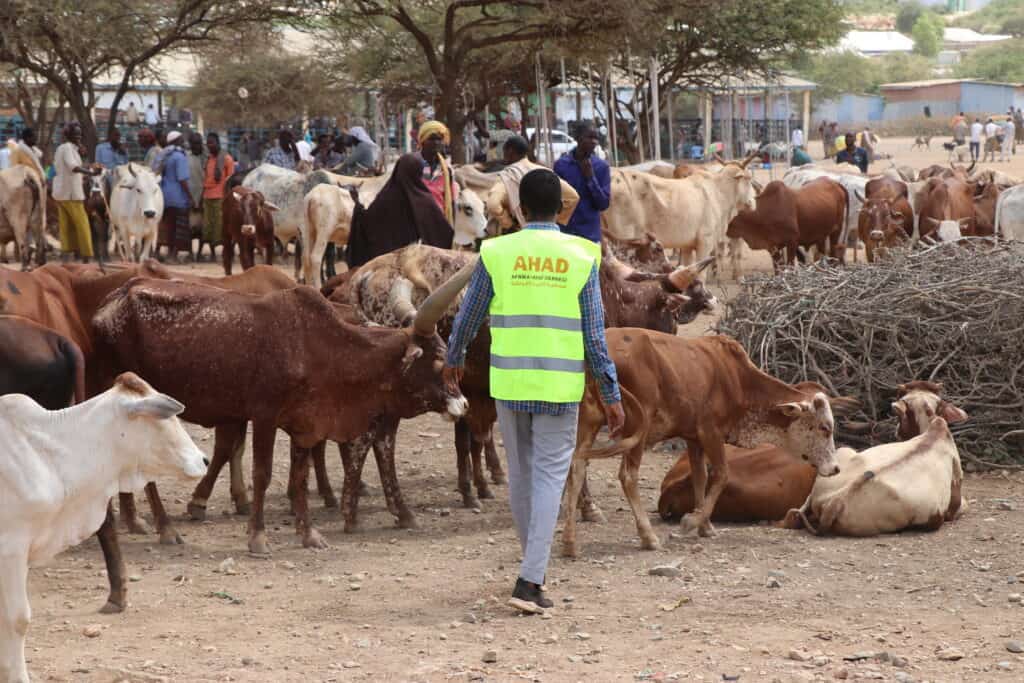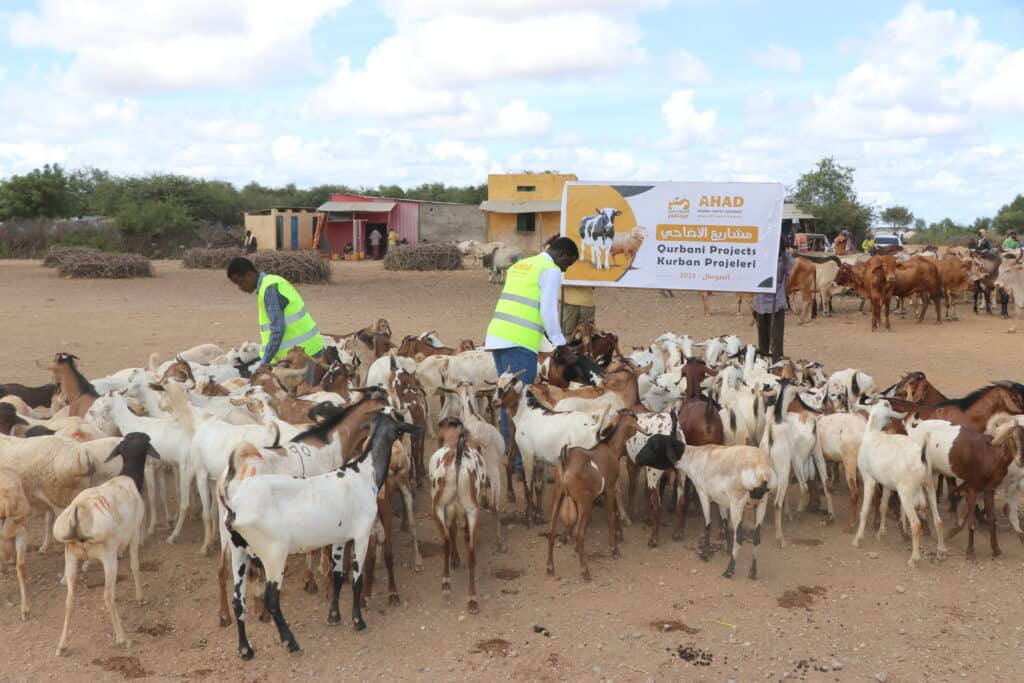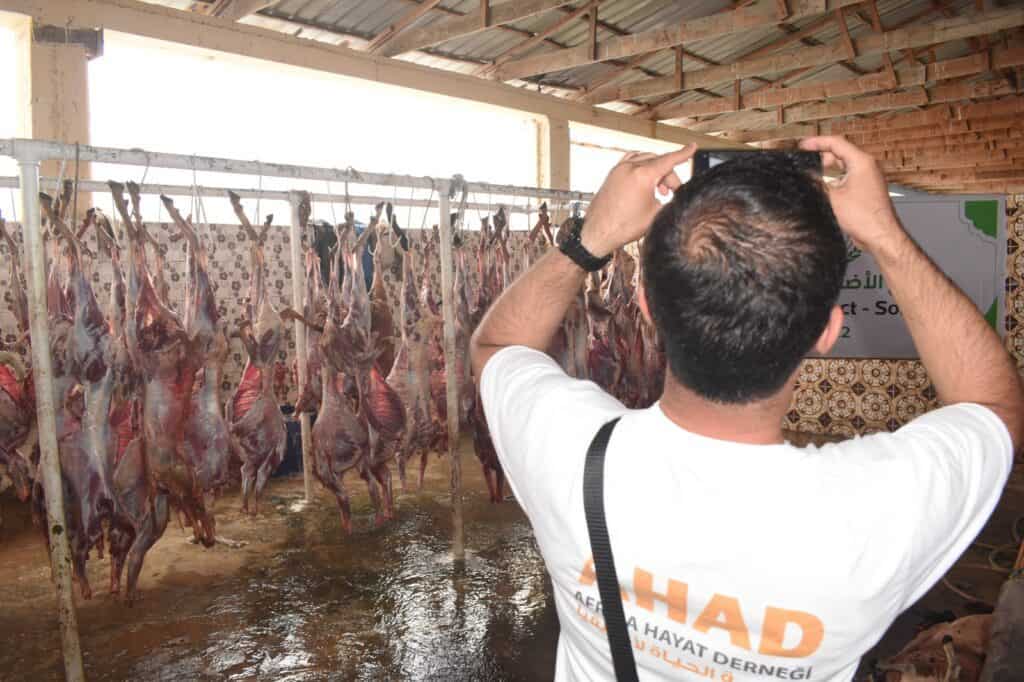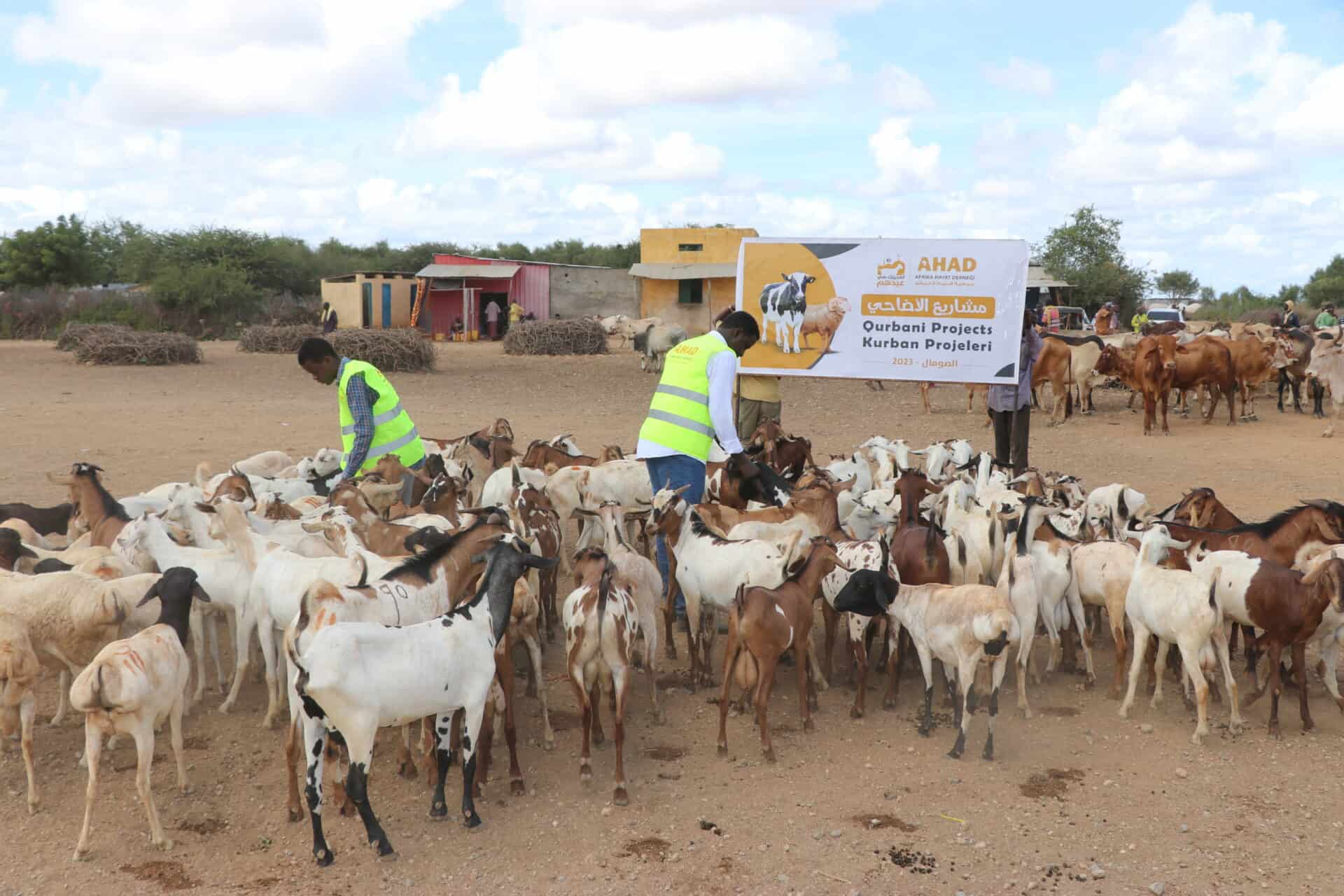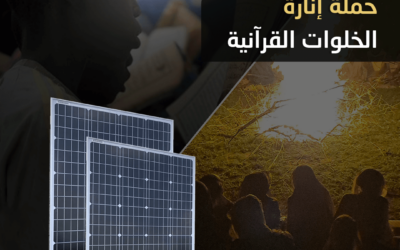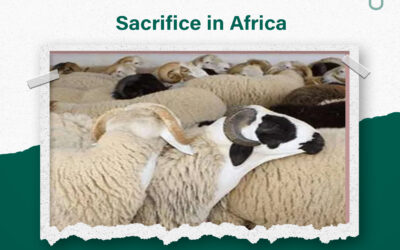food insecurity in the refugees camps
Food insecurity remains a pressing issue across Africa, posing a significant challenge to the well-being and development of communities. The continent faces a multitude of factors contributing to food insecurity, including droughts, conflicts, and economic instability. In response to this critical situation, Qurban projects have emerged as a means to address food scarcity and provide relief to vulnerable populations. This project, deeply rooted in both the Islamic religion and tradition, aim to distribute meat to those in need, offering nourishment, sustenance, and a sense of solidarity to individuals and communities affected by food insecurity in the camps of refugees in Africa.
African refugees face significant challenges in accessing food due to various factors.
Firstly, many refugees flee their homes due to emergencies, leaving behind their means of food production and livelihoods. As a result, they are forced to rely on humanitarian aid for their basic needs, including food. Secondly, the remote and isolated locations of some camps pose logistical difficulties in the delivery of food aid. Moreover, economic constraints and poverty among host communities may strain the availability of food resources for refugees. Host communities themselves may face food insecurity, making it challenging for them to accommodate the additional needs of refugees. However, limited resources and funding often restrict the availability of food assistance, making it difficult to meet the demand of a large refugee population.
The Impact of the Qurban Project on Refugees in Africa
The Qurban Project holds significant importance in providing relief and support to needy people around the world. After careful study and assessment of the needs, it has been determined that conducting the majority of Qurban projects in refugee camps is essential. This targeted approach aims to specifically address the challenges faced by Sudanese refugees in Chad, refugees in Mali from the Central African Republic, and locally displaced Somalis in Somali camps.
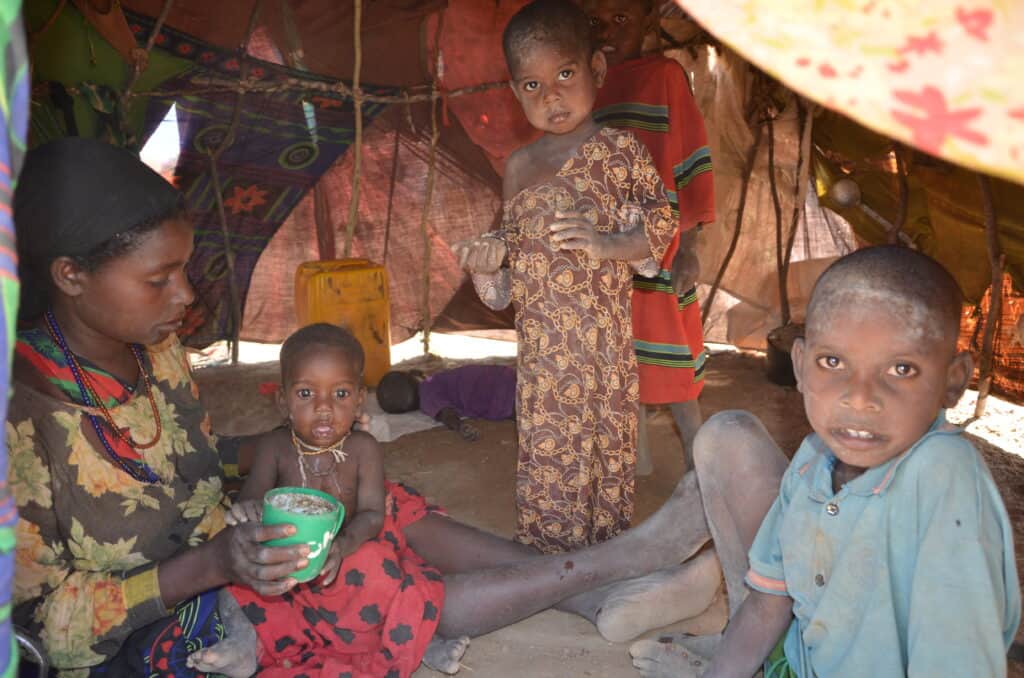
Expanding Impact: The Growing Reach of the Qurban Project in Africa
In 2020, we executed 4,000 shares, benefiting 76,000 individuals in Somalia, Chad, and Sudan.
In 2021, we executed 6,000 shares, benefiting 114,000 individuals in Somalia, Sudan, and Chad.
In 2022, we expanded our reach to Somalia, Chad, and Sudan, as well as Ghana, Mali, Niger, and Burkina Faso, reaching a total of 190,809 individuals who benefited from our efforts.
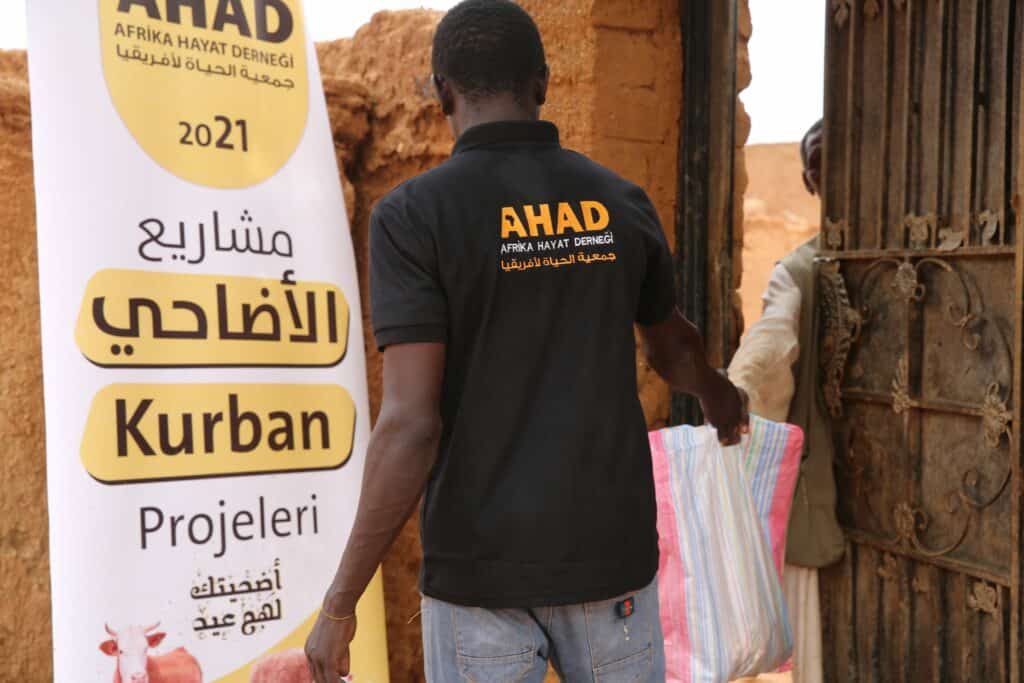
Operation of The Project
The Qurban Project operates in accordance with the principles of Islamic Shariah law. Hence, utmost care is taken to ensure that the sacrificial animals meet the required religious and health conditions. The project is supervised by Shariah and health specialists, as well as monitoring committees, to ensure the following:
- Animals are free from any defects (such as blindness, illness, lameness, or emaciation).
- The sacrificial animals have reached the minimum age required by Shariah.
- Conformity with the proper etiquette and conditions of sacrificing animals.
- Execution is carried out at the appropriate time and in the designated places.
- Natural fattening of the animals.
- Examination of the animals by a qualified veterinarian and preparation for slaughter in dedicated enclosures.
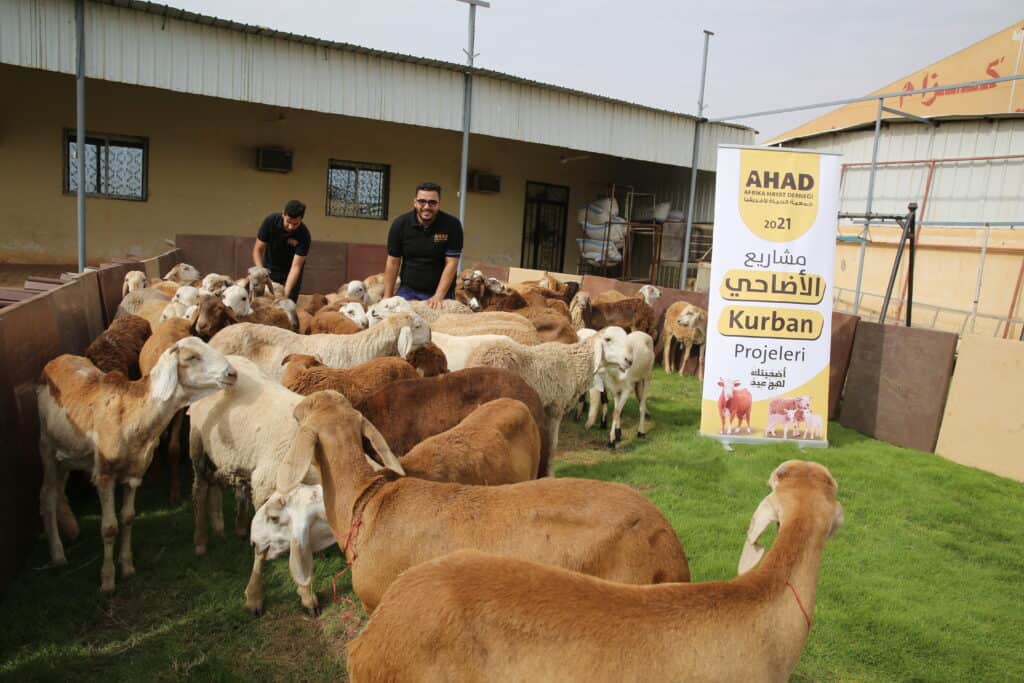
Commitment to Safety and Hygiene Standards:
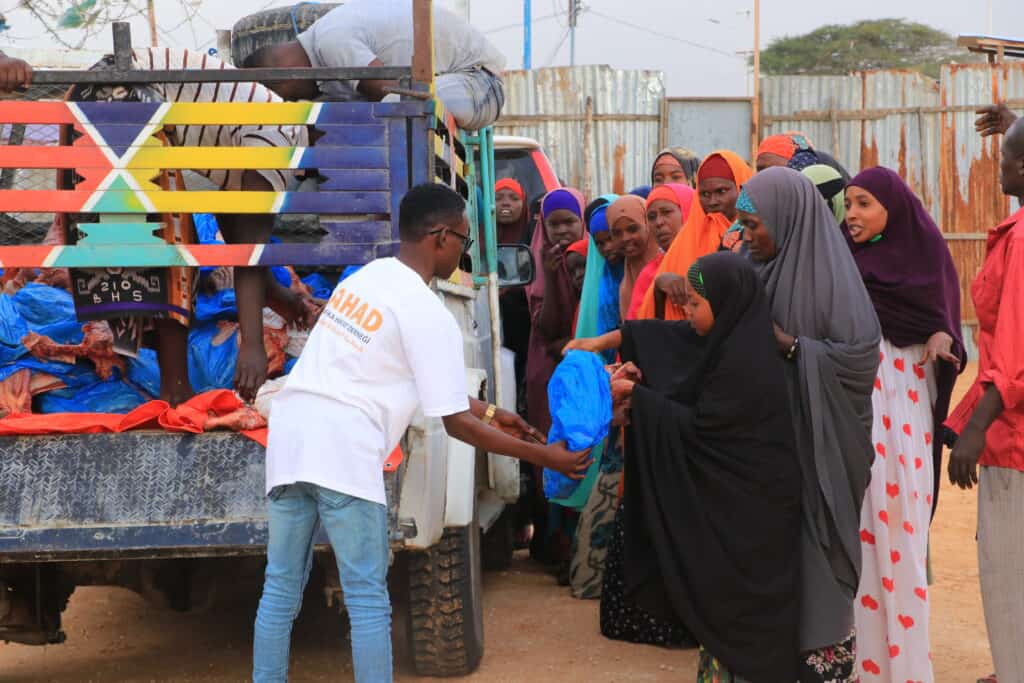
To ensure the safety of beneficiaries and workers, the slaughtering process takes place in dedicated areas that undergo thorough cleanliness and sanitization measures before and after each sacrifice.
- These designated areas for slaughtering are established within the project implementation zone, where the skinning of sacrificial animals is carried out under clean and sanitized environmental conditions. Furthermore, the butchering process is conducted in a hygienic environment.
Documenation Process
1) For individual donors:
Preparation of a Signboard: A signboard is prepared displaying the name of the generous donor or the person being donated for (e.g., family or relatives). It is prominently displayed during the slaughter process.
Photography of the Animal: A photograph is taken of the sacrificial animal before the slaughter, alongside the signboard. This documents the original condition of the animal prior to the sacrifice.
Photography of the Slaughter: The slaughtering process is directly captured on camera, with the recitation of the donor’s name in accordance with the principles of Islamic Shariah.
Photography of the Distribution: Moments of distributing the meat to the beneficiaries are photographed, showcasing the charitable act and capturing the impact on the recipients.
Sharing a Project-specific Drive Link: Upon project approval, a private drive link is shared, allowing access to project documentation.
Timely Document Upload: All documentation is uploaded within a maximum timeframe of 24 hours.
2) For our partners :
Preparation of all necessary printed materials and banners with the name of the donor organization. capturing key moments and processes. This includes:
Selection Stage: Photographing the process of choosing the sacrificial animals, highlighting the careful selection criteria and ensuring transparency.
Expert Examination: Capturing the inspection and examination of the animals by specialists, ensuring the highest standards of health and suitability for sacrifice.
Pre-Slaughter Photography: Taking photographs of the animals before the slaughter, providing a visual record of their quantity and overall condition.
Slaughter Area: Documenting the designated area where the sacrificial process takes place, showcasing the adherence to proper facilities and hygiene standards.
Direct Slaughter Capture: Photographing the actual slaughter process, adhering to the Islamic rituals and guidelines, and preserving the memory of the noble act of sacrifice.
Division and Distribution: Capturing the moments of dividing and distributing the sacrificial meat, demonstrating the equitable and efficient distribution process.
By implementing these measures, the project ensures robust documentation that not only serves as a record but also promotes transparency, accountability, and recognition for the generous contributions of the donors.
BY AFRIKA HAYAT LENSE DURING EID ULDHHA SEASON – AFRICA
